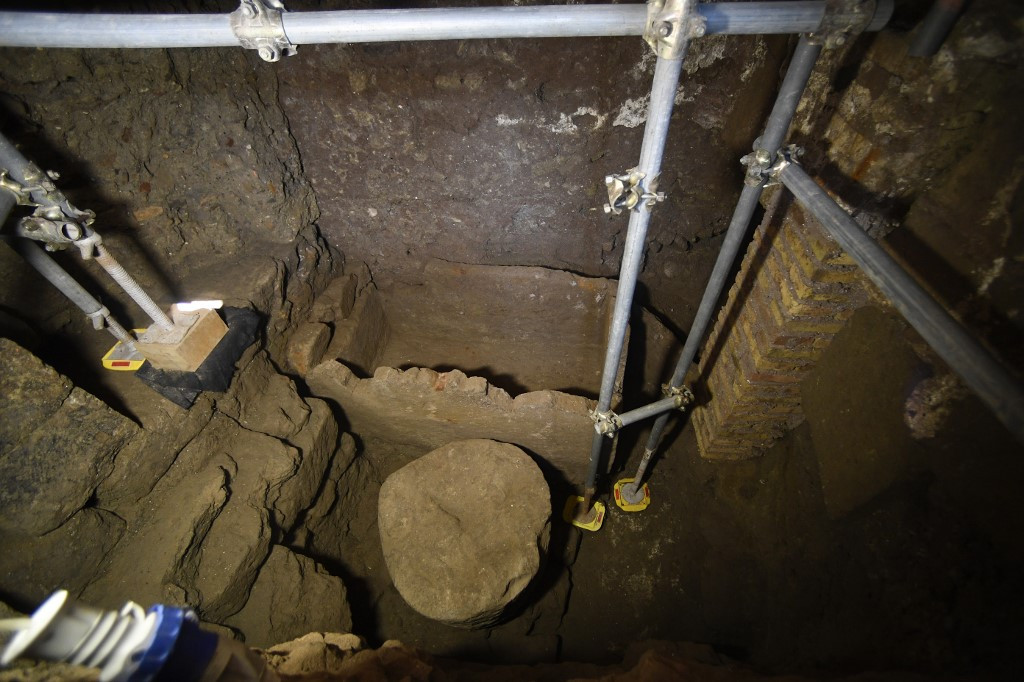Popular Reads
Top Results
Can't find what you're looking for?
View all search resultsPopular Reads
Top Results
Can't find what you're looking for?
View all search resultsRome unveils tomb that may belong to wolf-suckled king
An ancient tomb thought to belong to Rome's founder Romulus was presented to the world, after months of investigation by history sleuths.
Change text size
Gift Premium Articles
to Anyone
A
n ancient tomb thought to belong to Rome's founder Romulus was presented to the world on Friday, after months of investigation by history sleuths.
The 6th century BC stone sarcophagus, with an accompanying circular altar, was discovered under the Forum in the heart of Italy's capital over a century ago -- but experts could not agree on whether or not it belonged to the fabled figure.
According to legend, Romulus founded the city after killing his twin brother Remus.
The brothers had been raised by a she-wolf -- the symbol of Rome shows them sucking at her teats -- but later fell out over where to build the new metropolis.
Historians have long been divided not only over whether the pair actually existed, but if so where Romulus' body -- which was reportedly dismembered after his death by angry senators -- may have been buried.
The tomb was found in the 19th century and was known to specialists at the time but was forgotten until new digs within the past year.
The Colosseum Archaeological Park, which manages the Forum where the sarcophagus lies, said recent clues all pointed to it being the founder's tomb, in what it labelled an "extraordinary discovery".
Still, archaeologists called for caution, saying it was impossible to scientifically confirm -- and no bones were found inside the sarcophagus.
"It's only a suggestion based on ancient sources, all of which speak of the presence of the tomb of Romulus in this area of the Forum," Patrizia Fortini, who was charged with the dig, told AFP.
"It's certainly an important monument. The shape of the chest reminds us of a memorial, a place of remembrance, but what it really was, we can't say."
Read also: Like roads, many genetic lineages led to ancient Rome
'Rome's political birth'
Romulus, made popular by writers such as Livy, Ovid and Plutarch, is said to have ploughed a square furrow around the Palatine Hill to demarcate the walls of the future city.
When a mocking Remus hopped over the "wall" to prove how ineffective it would be against invaders, his brother killed him.
A team of scientists carrying out a dig in the late 1980s discovered a long, deep gash marked by large stones, which they claimed was the "sacred furrow" ploughed by Romulus.
Legend has it he went on to establish the Roman senate and rule as the city's first king for nearly 40 years, before disappearing into thin air one day while out inspecting his troops.
Some versions of the tale have him taken up to heaven by the god of war but others have him brutally murdered by jealous senators, who tore him limb from limb and scattered his body parts across the city. There may have been no body to bury.
In any case, Romulus acquired a cult following, making it more than plausible that the ancient city built a shrine to its beloved -- and possibly mythical -- founder.
"Whether Romulus existed or not is not important," archaeologist Paolo Carafa told AFP.
"What matters is that this figure is considered by the ancients to mark the political birth of the city."











